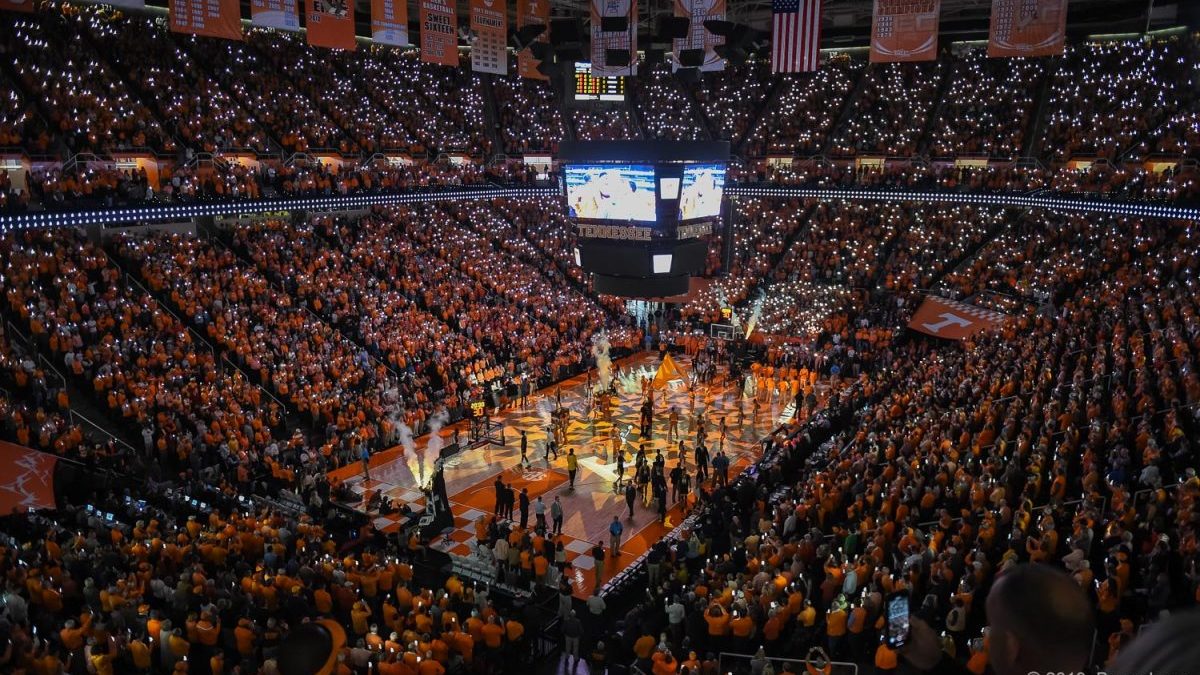Once upon a time, Kentucky won 11 straight in this series. Jerry Green’s Vols broke that streak in Rupp Arena, and Tennessee won four of seven from 1999-2002. Then Kentucky was at it again, winning eight in a row.
Bruce Pearl’s Vols broke that streak, also in Rupp Arena. Pearl finished his time in Knoxville at 4-9 against the Cats – which was progress considering where we’d been in this rivalry – but that came after a 3-3 split his first three years. The Vols beat #2 Kentucky in Knoxville in 2010, but that was Tennessee’s only win in a ten game stretch against the Cats.
Kentucky’s last win in Knoxville during that stretch was in 2012, when the eventual national champions escaped with a three-point win in Cuonzo Martin’s first season. The next year in Knoxville, the Vols unleashed a shocking 30-point beat down on Kentucky. A temporary bad scheduling idea from the league office meant the game wasn’t played in Knoxville in 2014. Kentucky’s almost-undefeated juggernaut won in Knoxville against Donnie Tyndall’s squad in 2015.
And then Rick Barnes arrived. The Vols are 6-4 against Kentucky since then, 4-0 in Knoxville.
The Cats have one victory in Knoxville in the last seven years.
Any win over these guys is always special. But there was a time when any win was an oasis in the desert. There was a time when Kentucky fans filled the upper deck with an expectation of an easy trip to Knoxville. For Tennessee to turn the tide in this rivalry this way, especially in Knoxville, is unheard of in my lifetime. It’s a great season to be a Tennessee Vol.
Every Kentucky squad to roll through here in Barnes’ tenure has been ranked, as you’d expect. Tennessee beat the Cats in Knoxville at #20, #4, #17, and #4. And we’re getting ready to catch them at #15.
They did it by shooting 30-of-34 at the free throw line in 2016. They did it with an all-time J.P. Prince stat line from freshman Grant Williams in 2017 (13 points, 6 rebounds, 6 assists, 4 blocks, 3 steals, 0 turnovers, and the game-winner). They did it with a 16-3 second half run in 2018, erasing an eight-point halftime deficit. And last year they did it with defense, holding Kentucky to 14 field goals and 31.8% from the floor.
There’s no one way it’s happened for Barnes. Many of the heroes of the last three wins are gone, but the Vols also beat Kentucky with 18 points and 13 rebounds from Armani Moore in 2016, and 25 points from Robert Hubbs in 2015. Barnes has found a way to get the best from everyone, not just the superstars, in this match-up in Knoxville. We will need it to keep this thing going.
There is no March without February
The bracket remains a simple computation: Tennessee needs wins, and the schedule is strong enough that just about any path to 18-19 regular season wins gets you in the conversation. Home wins are easier, and getting Kentucky up on the board certainly looks better. This is the first of two shots the Vols will get at the Cats, with two more against Auburn also on the horizon. This team will have its chances for marquee wins. Might as well start here.
To do that, Tennessee needs to take advantage of both the good news and the bad news in this match-up. First, the good news: for a Tennessee team that struggles so mightily with turnovers, Kentucky doesn’t present much of a challenge on paper. The Cats are 280th nationally in turnovers forced, 305th in steals forced. Like the Vols and plenty of Calipari teams of the past, they like to block shots and let that create the necessary havoc defensively without having to gamble and give up easy buckets.
…with one notable exception: Ashton Hagans, who will almost certainly go against Santiago Vescovi when both are in the game. Hagans is 74th nationally in steals, and Vescovi is currently giving it away on around 30% of his possessions. If Josiah James doesn’t play again, it puts a lot of pressure minutes on Vescovi (and Jordan Bowden, who is typically much better with ball security). Hagans is good enough to disrupt this whole equation by himself. If that happens, the Vols will have a very difficult time getting this done.
On the other end of the floor, Kentucky presents a similar challenge to the Mississippi State squad that decimated Tennessee’s defense in the second half. The Cats like to run three guards with two elite big men: 6’11” Nick Richards and 6’10” E.J. Montgomery. Richards in particular has been on a tear, averaging 18.5 points and 10 rebounds over Kentucky’s last six games against a really tough schedule. Auburn did a good job limiting him without fouling, but he shot 14 free throws against Texas Tech and 15 against Mississippi State.
The Vols were the aggressor against Alabama, and as was the case with the home win over South Carolina, the free throw line made all the difference. Kentucky is typically the aggressor: fifth nationally in free throw rate.
Watch the lineups in this one, especially if James doesn’t play again. The Vols made most of their hay against Alabama with Uros Plavsic in foul trouble; this is a big-boy spot for him. Maybe we walk away from this one just shaking our heads and saying Kentucky’s bigs were a bad match-up for us. But we’ve seen Pons and Fulkerson hold their own against elite bigs from Washington; we’ve just also seen everyone get carved up by Mississippi State’s. Which way is this one going to go?
Saturday, 1:00 PM, CBS. Can Knoxville come alive again for the Vols against Big Blue Nation? Can Tennessee make win #14 their best one yet?
Go Vols.

